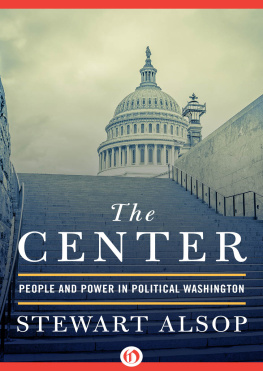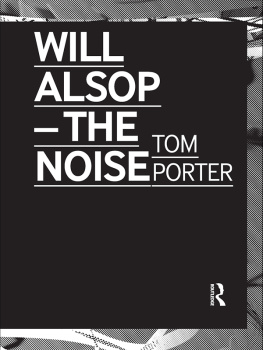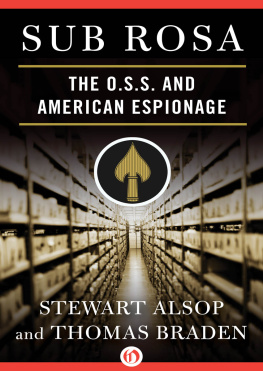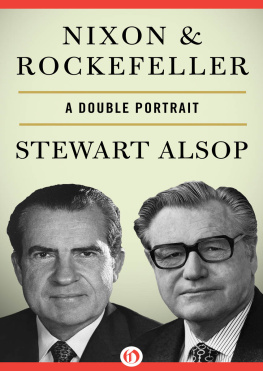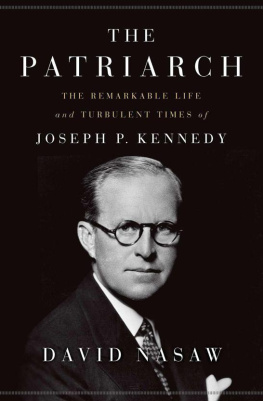About the Author
Stewart Alsop (19141974) was a longtime political columnist and commentator on American affairs. A graduate of Yale University, he worked in book publishing until World War II. Rejected by the US Army for medical reasons, he joined the British Army and fought with the Kings Royal Rifle Corps in Italy. He transferred to the US Army in 1944 to carry out missions planned by the Office of Strategic Services (OSS)the topic of his book Sub Rosa, written with OSS compatriot Thomas Braden. He was awarded the Croix de Guerre with palm for his work on wartime missions in France.
From 1945 to 1958, Stewart Alsop was cowriter, with his elder brother Joseph Alsop, of the thrice-weekly Matter of Fact column for the New York Herald Tribune. He went on to become the Washington editor of the Saturday Evening Post and wrote a weekly column for Newsweek from 1968 until his death in 1974. His final book, Stay of Execution, traces the yearshis lastafter his diagnosis with a rare form of leukemia.

EARLY BIRD BOOKS
FRESH EBOOK DEALS, DELIVERED DAILY
BE THE FIRST TO KNOW
NEW DEALS HATCH EVERY DAY!


EARLY BIRD BOOKS
FRESH EBOOK DEALS, DELIVERED DAILY
BE THE FIRST TO KNOW
NEW DEALS HATCH EVERY DAY!

THE DRAMA OF CONFLICT
The sons-of-bitches are gaining on us.
It is best for a reporter to admit his bias. My bias is this: I like Washington. It is not only, after a couple of decades, my home town. It is also, in all the world, my favorite city.
There are lots of things wrong with Washington, of course. As everybody knows, the summers can be dreadful. There are no really first-class restaurants, and the parking lot operators practice legal highway robbery. Persons interested in theater, music, and the like are fed on very thin fare. The tax laws have encouraged real estate speculators to turn much of downtown Washington into a characterless mass of flat-faced, steel-glass-and-concrete office buildings.
There are other things that are more profoundly wrong with Washington. There is too much crime, and there are too many poor Negroes crowded into too small an area, which is, of course, one reason why there is too much crime. There are also things that are very wrong with the government of the United States, which is Washingtons only reason for existence. Even so, the bias is there: I like Washington.
I like Washington for small reasons, like May, or the eleven oclock rule, or the occasional whiff of the past. But I like Washington for larger reasons, too.
The tourists come to Washington in April to see the cherry blossoms, when Washington is often chilly and blossomless. They ought to come in May. May is a lovely month, but nowhere in the world lovelier than in Washington. Washingtons May makes up for Washingtons August, which is saying a great deal.
As for the eleven oclock rule, it is a lifesaver for anyone who has to dine out a lot, and for most denizens of Political Washington dining out is part of the job. The eleven oclock rule is a curious, un-American custom imposed by the fact that Washington is filled with diplomats and other protocol-conscious persons. The ranking guest leaves the house at eleveneleven-fifteen at the latestwhich means that everyone can get to bed sober and at a reasonable hour. And because of the eleven oclock rule, a sensible hostess serves dinner within half an hour of the time the guests were invited, without the eternal standing and guzzling which precedes dinner in New York and most American cities. New Yorkers who have lived long enough in Washington to become used to such amenities never again quite accustom themselves to the barbarities of dining out in New York.
As for that whiff of the past, Washington is a young city, of course, even by American standards. In 1800, when the federal government moved from Philadelphia to the Federal City and Abigail Adams first hung her washing in the East Room of the unfinished White House, Washington was not a city at all, but a rather slovenly bad joke. But largely because George Washingtons dream of the Federal City (modestly, he never called it Washington) as a busy industrial center never came true, the smell of the past is strong in Washington.
It used to be strongest of all in the White House. As a very young man this reporter, as a rather distant Roosevelt relation, first attended family gatherings at Franklin Roosevelts White House. (My father was always infuriated when the Alsops were identified in the newspapers as Roosevelt kin. He felt that the Roosevelts ought to be identified as Alsop kin.) In those days the big house was like some very old, very pleasant, slightly down-at-heel country mansion of a very rich family. The past was everywhere, in every crack in the plaster and creak in the staircase. Now there are no more cracks and no more creaks, and not much past either.
When the whole interior of the White House was hauled out, during Harry Trumans administration, so that the house consisted only of the outer walls, the past was hauled out with it. Mrs. John F. Kennedy did her brilliant best to refurbish and rearrange the house in such a way as to remind the visitor that it is an old house, with much history lived out in it. But it really isnt an old house any more, but a very new house with a commodious facsimile of what once was there built inside old walls. The house is not like a rich familys old mansion any more, but like the new house of a very rich man, filled with very expensive old furniture.
Was the gutting of the White House really necessary? Mr. Truman had no doubt that it was. I wrote to ask him about it and received this answer: There was no question that the interior was in danger of imminent collapse and it was not possible to consider an archaeological restoration. Well, maybe so. But as John Kenneth Galbraith has pointed out, old houses always seem on the verge of disintegration, which is part of their charm, but they never do actually collapse.
The restorer-vandals have been at work on Capitol Hill, but they have not yet succeeded in excising the smell of the pastsince the gutting of the White House it is stronger there than anywhere in Washington. Everyone who interests himself in such matters is aware of the horrors perpetrated by the nonarchitect, Architect of the Capitol George Stewart, and by his Congressional backers, notably that most admirable man, the late Speaker of the House Sam Rayburn. The chief horror is the extension of the east front of the Capitol. It is a faithful but meaningless replica of the old east front, in lifeless dull gray marble. As this is written, a drive is on similarly to desecrate the west front. But even if the vandals triumph, the smell of the past will still prevail in the interior of the old building.
It is conventional to admire the old Supreme Court Chamber, and like many conventions this is a sensible one. It takes very little imagination to see that semicircular, rather cozy room as it was when the Senate sat there, and to hear Webster thundering, or Calhoun defending the South, the poor South, or Clay exercising the wily arts of compromise. But there are also odd corners, which are hardly known at all, and which are much as they were when Benjamin Latrobe, with Thomas Jefferson eagerly peering over his shoulder, began the building of the Capitol, even before the British in 1814 made a most magnificent ruin of the place, as Latrobe wrote to Jefferson.
Next page
